VETIVER SYSTEM FOR INFRASTRUCTURE INVESTMENT AND INFRASTRUCTURE PROTECTION
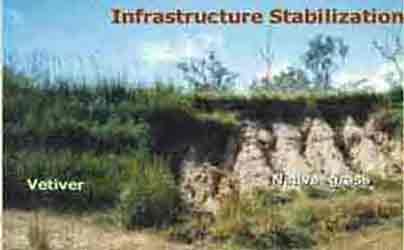
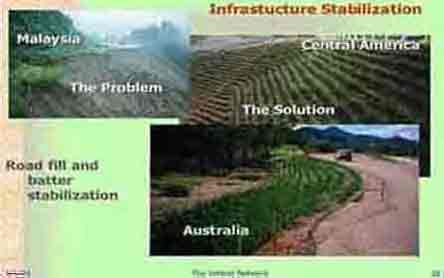

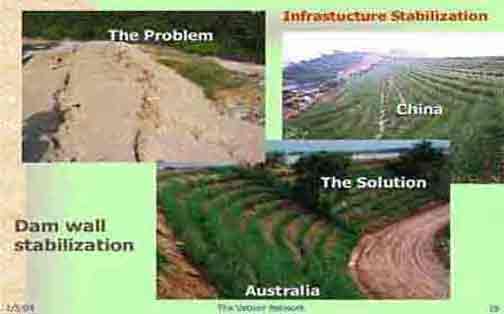
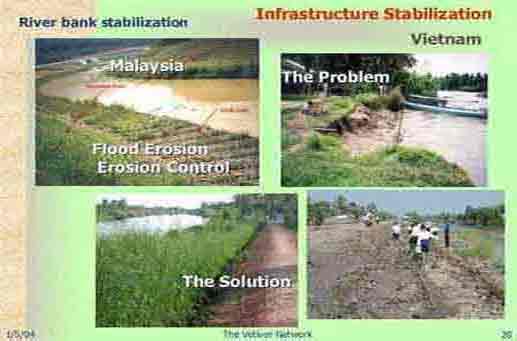
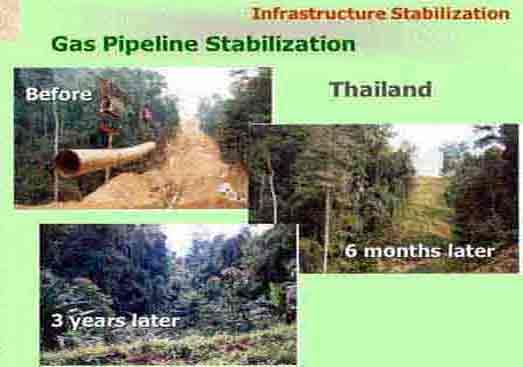
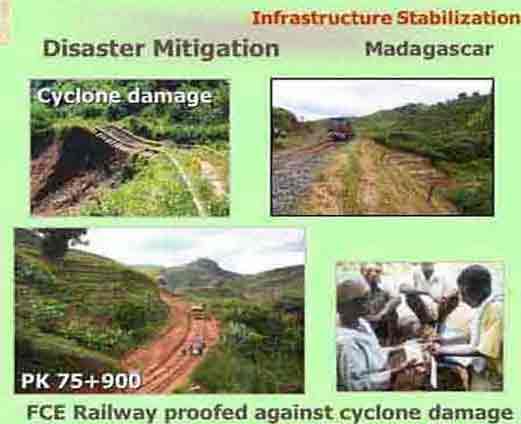
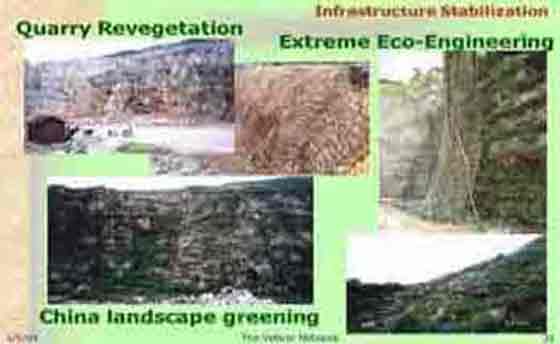
|
VETIVER SYSTEM FOR INFRASTRUCTURE INVESTMENT AND INFRASTRUCTURE PROTECTION |
||||||||||||||
 |
||||||||||||||
| The Vetiver System has been thoroughly tested for its capability to stabilize steep and erosion prone constructed slopes. The example to the left shows a railroad embankment in Queensland, Australia, that has been planted to vetiver (left) and native grasses (right). Following heavy rains vetiver had completely protected the slope whereas the native grasses had been washed out and serious gullies formed. This type of demonstration has been carried out under different soil and climatic conditions with the same results. | ||||||||||||||
 |
||||||||||||||
| The first serious work using vetiver for highway stabilization was in Malaysia, thereafter the technique spread to other parts of the world, particularly Thailand (KB456),China, where vetiver is used today to protect cut and fill slopes of roads and railroads. Elsewhere it has revolutionized the protection of farm to market roads. In El Salvador 100% of the vetiver protected roads survived intact the onslaught of Hurricane Mitch. The Vetiver System has also been successfully used to stabilize river banks and canal and drain banks. | ||||||||||||||
 |
||||||||||||||
| The first serious work using vetiver for highway stabilization was in Malaysia, thereafter the technique spread to other parts of the world, particularly Thailand (KB456),China, where vetiver is used today to protect cut and fill slopes of roads and railroads. Elsewhere it has revolutionized the protection of farm to market roads. In El Salvador 100% of the vetiver protected roads survived intact the onslaught of Hurricane Mitch. The Vetiver System has also been successfully used to stabilize river banks and canal and drain banks. | ||||||||||||||
 |
||||||||||||||
| Vetiver Systems can be used to stabilize both sides of reservoir walls. The beauty of vetiver is that it can be planted to protect the draw down area (90KB) along the shore of the reservoir because it can withstand total innundation by water. Also when planted on the reservoir side of the dam wall it will protect the wall from wave action by absorbing the shock of the waves. It is an important technology for stabilizing fresh and brackish water fish and shrimp ponds (vetiver will tolerate salt concentrations equivalent to that of sea water. | ||||||||||||||
 |
||||||||||||||
| Often highways are built close to rivers, and river bank erosion can threaten the integrity of those highways. The Chinese (451KB) are studing this use quite intensively. Vetiver planted in the flood area of a river as well as on the banks themselves can provide stability and protection. Vetiver river bank buffers also will reduce sediment flows into waterways and will also reduce the amounts of excess phosphates, nitrates, and heavy metals from entering vital water systems. Many of the worlds great rivers such as the Mekong (2.2MB), Yangtse and the Nile and their tributaries have their banks damaged from the wave action from the fast and growing river boat traffic. Vetiver, as show on the right will solve these problems. | ||||||||||||||
 |
||||||||||||||
| Large engineering projects, such as the laying of petroleum, gas, or other pipelines can result in devastating results as they are installed often through some of the world's remaining natural habitat, such as the tropical forests in Thailand (KB618) and Cameroon. If properly planned and applied Vetiver Systems can stop erosion and at the same time work as a pioneer plant that allows the quick recovery of native vegetation. This happens because vetiver hedgerows prevent further deterioration of the site, improves the moisture of the soil, thus allowing native seeds to establish. | ||||||||||||||
 |
||||||||||||||
| Many natural disasters occur because of inappropriate human intervention. Land slides that occur in many areas of high and intense rainfall cause tremendous economic loss and hardships. Many of these slides would not happen if slopes were properly protected. Vetiver grass is an ideal plant since it is able to pin "slippable soil horizons" to underlying more stable sub-soil horizons. The case on the left reflects the result of a project (KB276) in Madagascar. Elsewhere in the world major problems are caused by hurricane induced landslides, an example is trhe damage by Hurricane Mitch in 1998 to some Central American countries. Vetiver can be used to prevent the worst damage caused by these events. (KB117) | ||||||||||||||
 |
||||||||||||||
| Vetiver Systems can be used to rehabilitate heavily degraded landscapes caused by industrial intervention including mines and quarries. On the left is an extreme form of eco-engineering developed in China, using VS to rehabilitate the vertical slopes of a large stone quarry (KB39). Apart from vetiver's unique ability to grow almost anywhere, it has tolerance to high levels of heavy metals. Thus it is an excellent plant for stabilizing mine detrious. | ||||||||||||||